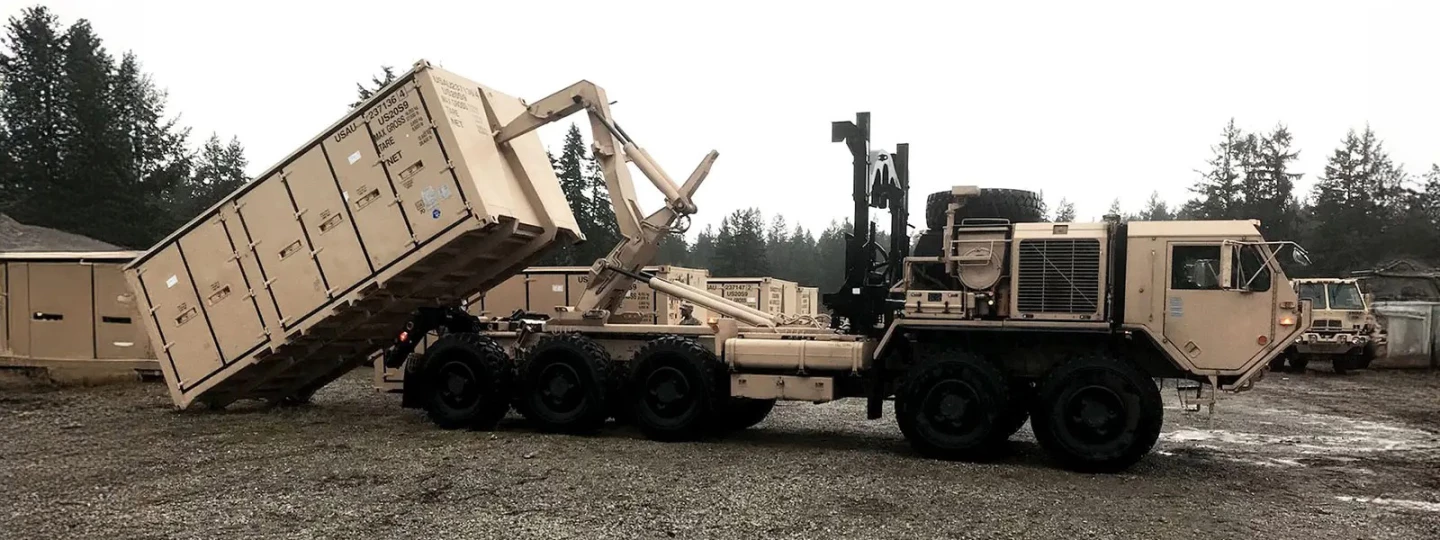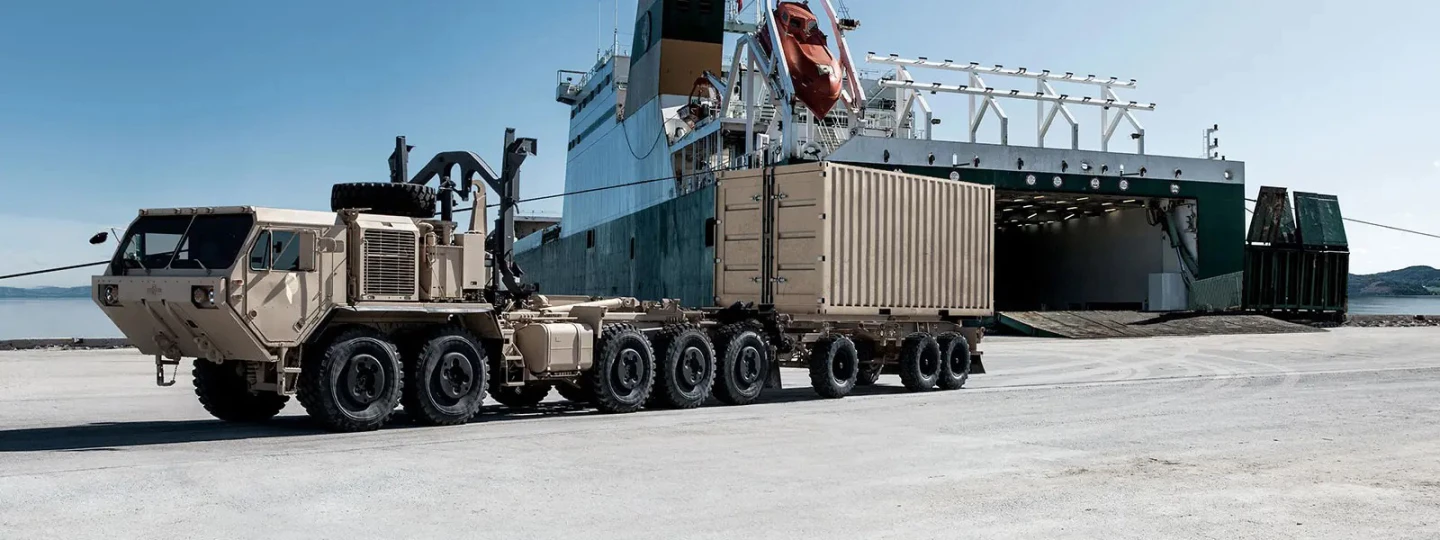Wisconsin-based Oshkosh Defense is upgrading its lauded Palletized Load System (PLS) vehicles for transporting cargo across battlefields with the ability to drive themselves – providing a critical advantage to troops moving supplies to where they're needed most during conflicts.
The next iteration of these 10-wheel trucks, designed to carry 16.5-ton payloads across practically any terrain, will get "by-wire functionality to enable autonomous operation and active safety systems that increase protection and efficiency for soldiers operating in complex environments."
In the video below, you can see the A2 outfitted with a bunch of driving assistance features – including automatic emergency braking and adaptive cruise control – as well as driverless operation. From the footage, it appears A2 trucks should be able to drive themselves in convoy-like formations. That can reduce the need to place soldiers on board and in harm's way while hauling equipment, field supplies, ammo, shelter, and fuel.
These imposing machines are powered by 600-hp diesel engines, and feature a hydraulic load-handling system that can quickly load and unload 20-ft (6-m) containers and flat-rack engineering mission modules (for building or repairing bridges, for example). This gear is built to load or unload a truck in just five minutes, without requiring the driver to get out of the vehicle. The PLS can also support a three-axle trailer.

Oshkosh landed an US$89 million contract from the US Army last week to deliver a fresh batch of these PLS trucks with self-driving tech. While the company hasn't specified what these cost, a single PLS is possibly priced at around $650,000, going by previous vehicle orders and delivery figures. The new driving assistance equipment will likely push that further.

The deal follows news of an autonomous Armored Multi-Purpose Vehicle (AMPV) prototype slated to be demonstrated in 2026 for the US Army's Armored Brigade Combat Team. BAE Systems' general-purpose vehicle will be able to navigate challenging terrain even when GPS signals are jammed, without the need for a driver behind the wheel.
Source: Oshkosh Defense







